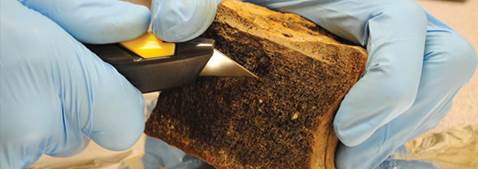CARBON DATING

Disclaimer: Copyright infringement not intended.
Context
- A court in Varanasi rejected a plea asking for a scientific investigation into the structure found inside the Gyanvapi Mosque that the Hindu side has claimed is a Shivling.
- The court said, “If Carbon Dating or Ground Penetrating Radar is permitted and if any damage is caused to the ‘Shiva Linga’ then it would be a violation of the Supreme Court order to protect it and it might also hurt the religious sentiments of the general public.
What is Carbon Dating
- Carbon dating is a widely-used method to establish the age of organic materials, things that were once living.
- Living things have carbon in them in various forms. The dating method is based on the fact that Carbon-14 (C-14), an isotope of carbon with an atomic mass of 14, is radioactive, and decays at a well known rate.
How it works?
- The most abundant isotope of carbon in the atmosphere is C-12. A very small amount of C-14 is also present. The ratio of C-12 to C-14 in the atmosphere is almost static, and is known.
- Plants get their carbon through photosynthesis; animals get it mainly through food. Because plants and animals get their carbon from the atmosphere, they too acquire C-12 and C-14 in roughly the same proportion as is available in the atmosphere.
- When they die, their interactions with the atmosphere stops. While C-12 is stable, the radioactive C-14 reduces to one half of itself in about 5,730 years — known as its ‘half-life’. The changing ratio of C-12 to C-14 in the remains of a plant or animal after it dies can be measured, and can be used to deduce the approximate time when the organism died.




1.png)
